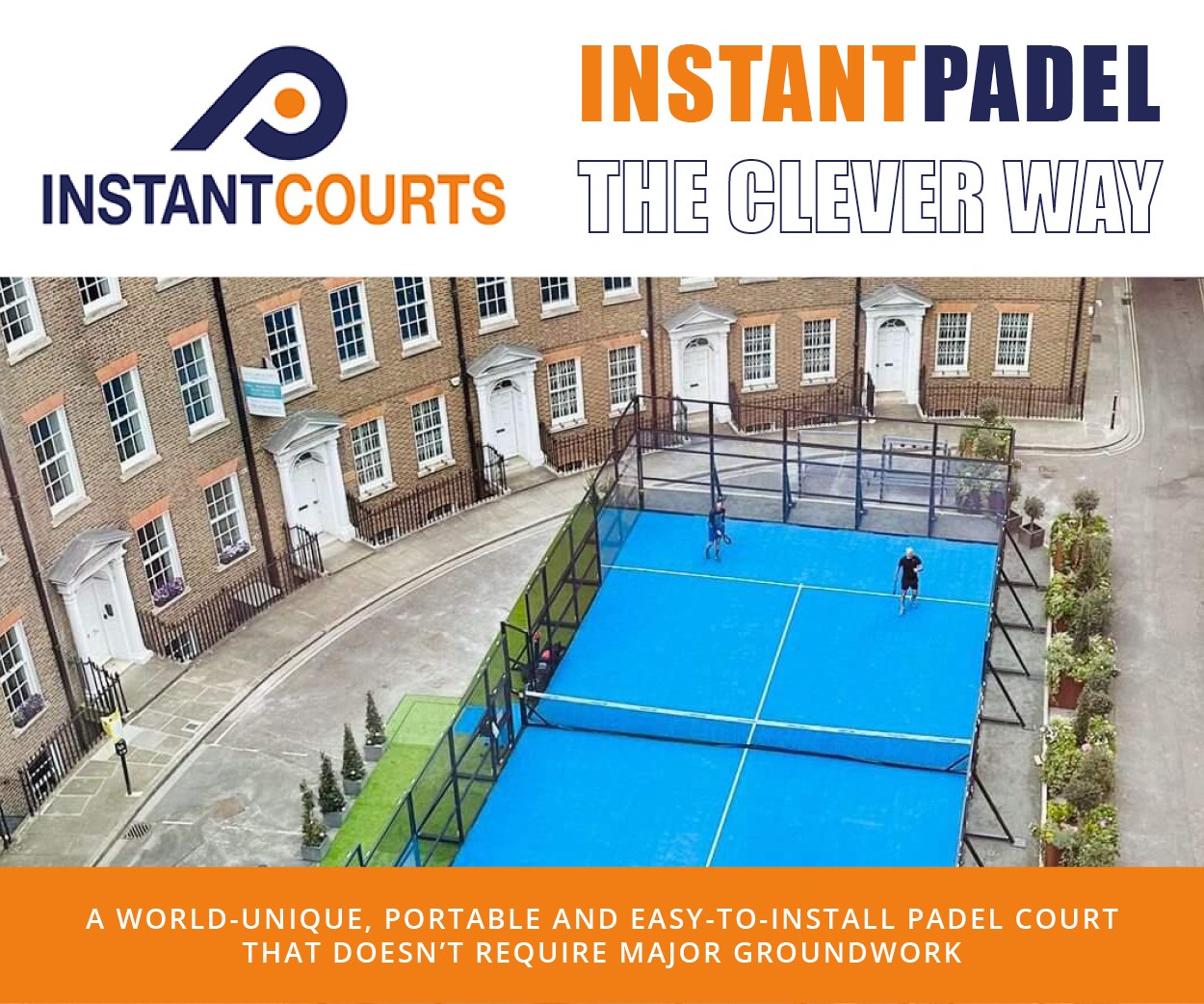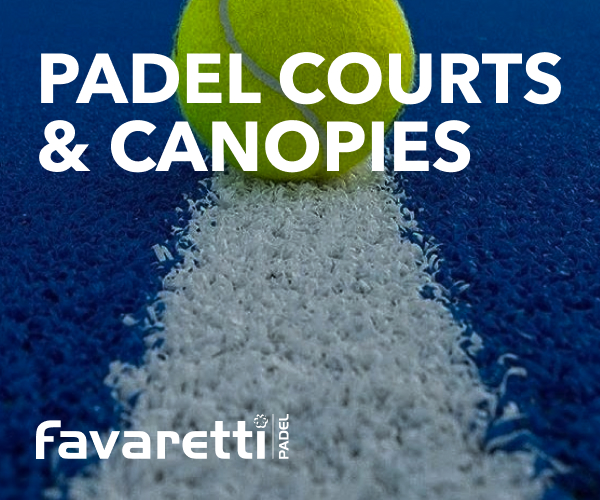LTA chiefs have told The Padel Paper they want to “bring the padel community together” and clarify the governing body’s role in padel’s development with the sport’s stakeholders.
Tom Murray, the LTA’s Head of Padel, and Olly Scadgell, Managing Director of Tennis Development, sat down for an in-depth interview with us following last week’s release of its 2024-29 Padel Strategy.
The Strategy sets out details of the LTA’s mission to grow padel by “making it accessible, welcoming, enjoyable and inspiring.” Within it are tangible targets for the end of 2026 to grow the game in several ways:
1. Grow the visibility of padel to increase awareness from 20% to 40% of the population, and interest in playing from 7.5% to 15%
2. Increase the number of annual padel players from 129,000 to 400,000, and monthly players from 65,000 to 200,000
3. Increase the number of padel courts from 350 to 1,000
4. Grow the padel coach and activator workforce from 40 to 700
5. Enable 10 players to break into the top 200 and two players into the top 100 and inspire the padel audience
As we know, much of padel’s growth in the UK (and worldwide) has thus far been driven by vast and ever-increasing private investment – but Scadgell and Murray are keen to stress the role the LTA will play in ensuring this commercially-driven growth remains in line with padel’s best interests.
Scadgell said: “We want to help padel operators think about the role they can play in growing padel, ensuring that it is accessible to everyone – adults, juniors, the physically inactive, those with disabilities and all communities. It’s important we as a governing body try to set the strategic direction for the sport in a way others can buy into.”

The Manchester blueprint
That strategic direction also includes making sure that padel’s infrastructure grows in a sustainable way – and the LTA has already begun working alongside operators and local authorities towards this objective in an area of particularly rapid growth so far this year – Manchester.
Murray explained: “Manchester City Council were being bombarded with enquiries from operators about building padel courts, so the council got in touch with us. We’re now providing strategic guidance and supporting conversations about local population and demographic modelling, to ensure these padel venues don’t cannibalise each other and become unsustainable, as we’ve seen happen in Sweden.
“It’s also a way we can get commercial operators to grow the sport with us and watch that padel doesn’t become inaccessible to people. We can use these levers to influence operators that it’s possible to be commercially successful whilst offering accessible, affordable opportunities for the local community.”
As a result of the collaboration, Manchester City Council identified space for 44 padel courts and opened them up to tender – simplifying the usual process of individual operators identifying potential sites themselves and going through the lengthy planning application process with local authorities who often need educating about the sport and its benefits.
The LTA now plan to roll the Manchester blueprint out across the other local authorities across the UK, leveraging their pre-existing relationships with councils forged through the Park Tennis Project (which will see over 3,000 tennis courts in over 1,000 public parks restored to working use by early 2025). “We’re in a very good place and have contacts at the right level,” said Scadgell.

‘Frustration’
Murray admits to frustration that this kind of background work goes unnoticed by those within the padel industry, some of whom question the LTA’s role within the sport.
“Our role isn’t clear to a lot of people,” Murray admits. “I’ve heard some venues say, ‘We’re going ahead in spite of the LTA.’ I feel there’s an educational piece to define what the relationship should be.
“Ultimately, we’re there to facilitate and ensure we have solid foundations so padel can grow sustainably. That begins with supporting venues from a governance perspective, including ensuring every venue has a safe environment, welfare officer and safeguarding standards in place, which we can do through our venue registration offer, as well as engaging with the wider sector so we can work and grow together.”
Scadgell adds: “I think we can play a role in bringing the industry together and set that direction and framework. Even if people might have different views about how we get there, at least they can align behind the ‘North Star’ of wanting to open padel up to more and different people.”
This collaborative process will now be supported by regular online padel forums – the first of which was last Thursday (19 September) attended by over 100 people. A Padel Advisory Group (PAG), with a wide variety of representatives from the broader industry, will also be formed early next year to address issues and identify opportunities.
Coaching and junior development

Elsewhere in the LTA Strategy, there’s a pledge to train and deploy 700 qualified Level 2 coaches (Instructors) and activators by the end of 2026. The number of padel Level 2 coaches is currently 126 and it’s hoped it will reach 175 by the end of this year. Additionally, a Padel Activator course (essentially to train up coaches working with beginners) will be rolled out before the end of 2025.
The LTA has set a target for the end of 2026 to get 10 GB players into the top 200 and two into the top 100 (a landmark that has remained frustratingly elusive so far). But there is acknowledgement that developing juniors has to be the main focus.
“We’ve defended our arguments for not sending teams to the European Junior Championships,” says Murray. “We got burned last time, it was detrimental to those players and we have learned from those experiences. It’s important to build foundations and a pathway.”
Scadgell adds: “We’ve only got a finite amount of money to invest, so where do you place your bets? Do you invest money in growing the coaching workforce, or sending a junior team to the World Championships? We are absolutely behind the fact we need to put in place a more robust system to identify and nurture junior players. You’ll see things move a little more quickly in that area in the next year or so.”
With Steve Yeardley now installed in the newly-created role of Padel Manager following the departure of Matt Stanforth, the U19 and U14 training camps will be continue and eventually be broken down into U18, U16, U14 and U12 groups. The LTA will work with padel venues on creating a database of junior players and strengthening the pathway.
Overall, Murray admits we’re “playing catch-up” with the pace of development in other European countries such as Italy, France, the Netherlands and, obviously, Spain. “People want everything to happen now, but more sustainable growth might actually be a blessing in disguise,” he says.
“We’ve been listening – and this strategy encompasses a lot of the concerns we’ve heard. It defines where we’re taking a leading role or more of a facilitating role by collaborating with the private sector.”









































